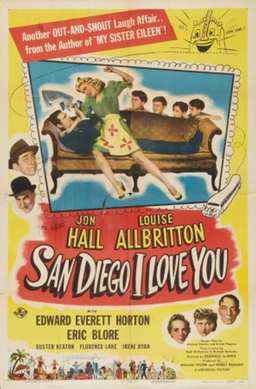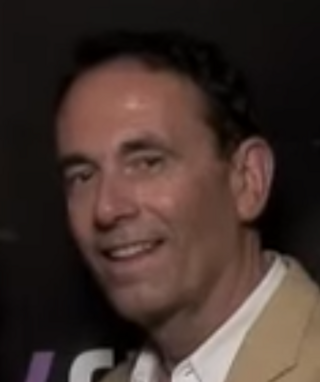Related Research Articles

A film festival is an organized, extended presentation of films in one or more cinemas or screening venues, usually in a single city or region. Increasingly, film festivals show some films outdoors.

A storyboard is a graphic organizer that consists of crude illustrations or images displayed in sequence for the purpose of pre-visualizing a motion picture, animation, motion graphic, or interactive media sequence. The storyboarding process, in the form it is known today, was developed at Walt Disney Productions during the early 1930s, after several years of similar processes being in use at Walt Disney and other animation studios.

Harold Clayton Lloyd Sr. was an American actor, comedian, and stunt performer who appeared in many silent comedy films.

The New Zealand Film Commission is a New Zealand government agency formed to assist with creating and promoting New Zealand films. It was established under the New Zealand Film Commission Act 1978.
Stock footage, and similarly, archive footage, library pictures, and file footage is film or video footage that can be used again in other films. Stock footage is beneficial to filmmakers as it saves shooting new material. A single piece of stock footage is called a "stock shot" or a "library shot". Stock footage may have appeared in previous productions but may also be outtakes or footage shot for previous productions and not used. Examples of stock footage that might be utilized are moving images of cities and landmarks, wildlife in their natural environments, and historical footage. Suppliers of stock footage may be either rights managed or royalty-free. Many websites offer direct downloads of clips in various formats.

Harry O, sometimes spelled Harry-O, is an American private detective series that aired for two seasons on ABC from 1974 to 1976. The series starred David Janssen, and Jerry Thorpe was executive producer. Harry O followed the broadcast of two pilot films: firstly Such Dust as Dreams Are Made On and secondly Smile Jenny, You're Dead, both starring Janssen.
The San Diego Film Critics Society (SDFCS) is an organization of film reviewers from San Diego–based publications that was founded in 1997.

Bryanston Distributing Company was an American film distribution company that was active during the 1970s. The company was founded by Louis Peraino and Philip Parisi in 1972. It went bankrupt in 1976, amid the company's numerous legal troubles.

The Australian Film Commission (AFC) was an Australian government agency was founded in 1975 with a mandate to promote the creation and distribution of films in Australia as well as to preserve the country's film history. It also had a production arm responsible for production and commissioning of films for the government. It was superseded by Screen Australia from 1 July 2008.

The cinema of Somalia refers to the film industry in Somalia. The earliest forms of public film display in the country were Italian newsreels of key events during the colonial period. In 1937 the film Sentinels of Bronze was produced in Ogaden Somalia, with nearly all Somali actors. Growing out of the Somali people's rich storytelling tradition, the first few feature-length Somali films and cinematic festivals emerged in the early 1960s, immediately after independence. Following the creation of the Somali Film Agency (SFA) regulatory body in 1975, the local film scene began to expand rapidly. In the 1970s and early 1980s, popular musicals known as riwaayado were the main driving force behind the Somali movie industry. Epic and period films as well as international co-productions followed suit, facilitated by the proliferation of video technology and national television networks. In the 1990s and 2000s, a new wave of more entertainment-oriented movies emerged. Referred to as Somaliwood, this upstart, youth-based cinematic movement has energized the Somali film industry and in the process introduced innovative storylines, marketing strategies and production techniques.

Andrew Harries is chief executive and co-founder of Left Bank Pictures, a UK based production company formed in 2007. In a career spanning four decades he has produced television dramas including The Royle Family,Cold Feet, the revivals of Prime Suspect and Cracker, as well as the BAFTA-winning television play The Deal.
Martha M. Foster is the founder and executive director of Living Earth Television (LETV), a Bloomington, Indiana-based nonprofit organization that develops programming from documentaries made by international filmmakers. Foster began LETV in 2002, in Chicago.

The Virginia Film Office is a part of the Virginia Tourism Corporation located in Richmond, Virginia. The Virginia Film Office brings jobs and revenue to the Commonwealth by marketing the state as a location for film, television, and commercial production and by supporting and fostering Virginia's in-state production industry.

San Diego, I Love You is a 1944 American comedy film directed by Reginald Le Borg and starring Jon Hall, Louise Allbritton and Edward Everett Horton.

Municipal elections were held in San Diego in 2016 for mayor, city attorney, city council, and ballot measures. The primary election was held on Tuesday, June 7, 2016, and the general election was held on Tuesday, November 8, 2016. Five of the nine council seats were contested. Two city council incumbents ran for reelection.

The following is the complete filmography of American actor Harry Dean Stanton.

Joan Shigekawa is an American film and television producer, cultural grantmaker, and arts administrator. After a distinguished career as a senior executive at the Rockefeller Foundation, she joined the Obama administration in 2009 as senior deputy chairman of the National Endowment for the Arts (NEA) and served as the agency's acting chairman from 2012 to 2014.
Film tourism, or film induced tourism, is a specialized or niche form of tourism where visitors explore locations and destinations which have become popular due to their appearance in films and television series. The term also encompasses tours to production studios as well as movies or television-related parks. This is supported by several regression analyses that suggest a high correlation between destinations taking a proactive approach in order to encourage producers/studios to film at their location, and the tourism success in the area after the release of the movie. This is consistent with induced demand theory. When the supply increases, in the form of media exposure to areas that were not regarded as tourist hotspots, the number of visitors increases, even though the majority of these new visitors would not have necessarily visited these areas previously. This is exemplified by a Travelsat Competitive Index study that indicated that in 2017 alone, approximately 80 million tourists made the decision to travel to a destination based primarily on its feature in a television series or film. This figure has doubled since 2015.

Wally Schlotter is an American film producer, former chairman of the San Diego Film Commission and UltraStar Cinemas' vice president of special projects. He is known for bringing Hollywood budgets for film and television to San Diego County throughout the 1980s and 1990s.
References
- ↑ Lamb, Blaine (1976). ""The Journal of San Diego History", SAN DIEGO HISTORICAL SOCIETY QUARTERLY, Fall 1976, Volume 22, Number 4: "SILENT FILM MAKING IN SAN DIEGO" By Blaine P. Lamb". SanDiegoHistory.org. The Journal of San Diego History. Archived from the original on 2004-10-30. Retrieved 2012-04-09.
- ↑ Spradley, Mike (2016-09-16). "The future of filming & TV production In San Diego". San Diego Gay and Lesbian News . Archived from the original on 2016-09-17. Retrieved 2023-07-04.
- ↑ Weisberg, Lori (2013-07-25). "Tourism bureau lays off 40% of its staff". San Diego Union Tribune . Archived from the original on 2015-09-08. Retrieved 2023-07-04.